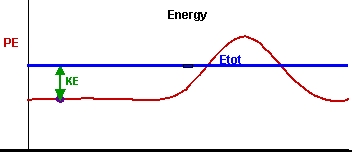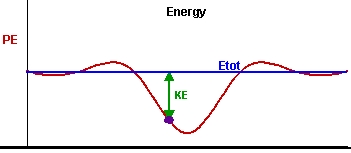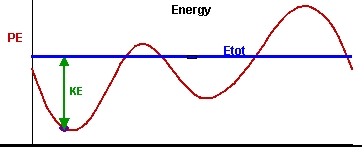Student Objectives
Students are to experiment with the simulation and consider the following
questions:
-
What does it take for the object to get past a barrier (or a "hill")?
What happens if the object does not make it past the barrier?
An example of a barrier is shown below.

-
What happens when you start an object at or near the top of a "hill?
Is it possible (or easy) to get the object perfectly balanced on top
of a hill?
-
What happens when an object is in a "valley"? How can an object be
"trapped" in the valley? An example of a valley is shown below.

-
What happens when you start an object at or near the bottom of a
valley? Is it possible (or easy) to get the object to stay near the
bottom of the valley?
-
Compare what happens to the motion of the object when it is trapped in
a narrow valley to when it is trapped in a wide valley.
-
What happens to the motion of the object when there are two valleys?
What does it take to get an object to start in the bottom of one
valley and travel to the next? Does it make a difference if the
valleys are even or uneven? (i.e. have the same or different "depths")
-
Suppose the object starts on a hill as shown below. How must the total
energy be adjusted so that the object will make it to the second
valley (the valley on the right)? What can be said about the kinetic
energy required (in terms of the heights of the hills and/or the
depths of the valleys)?






